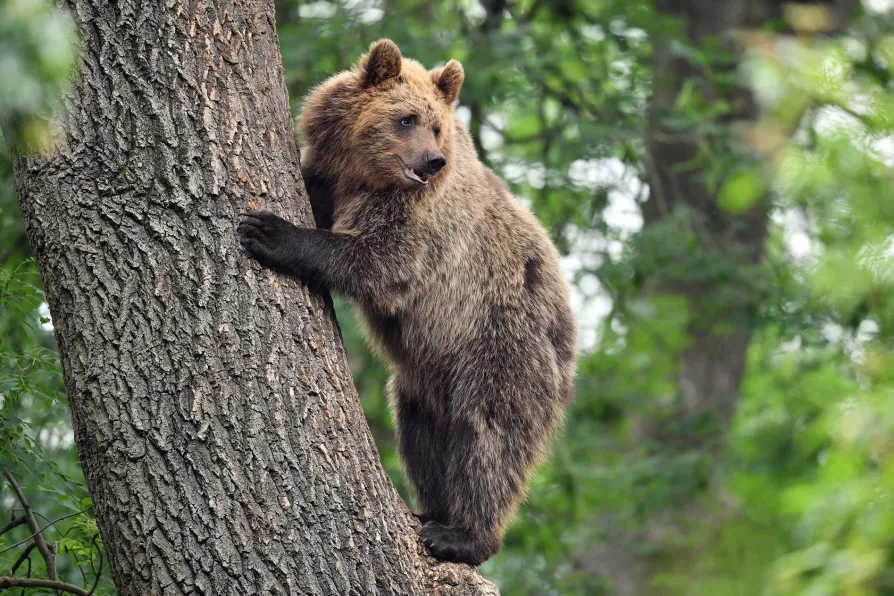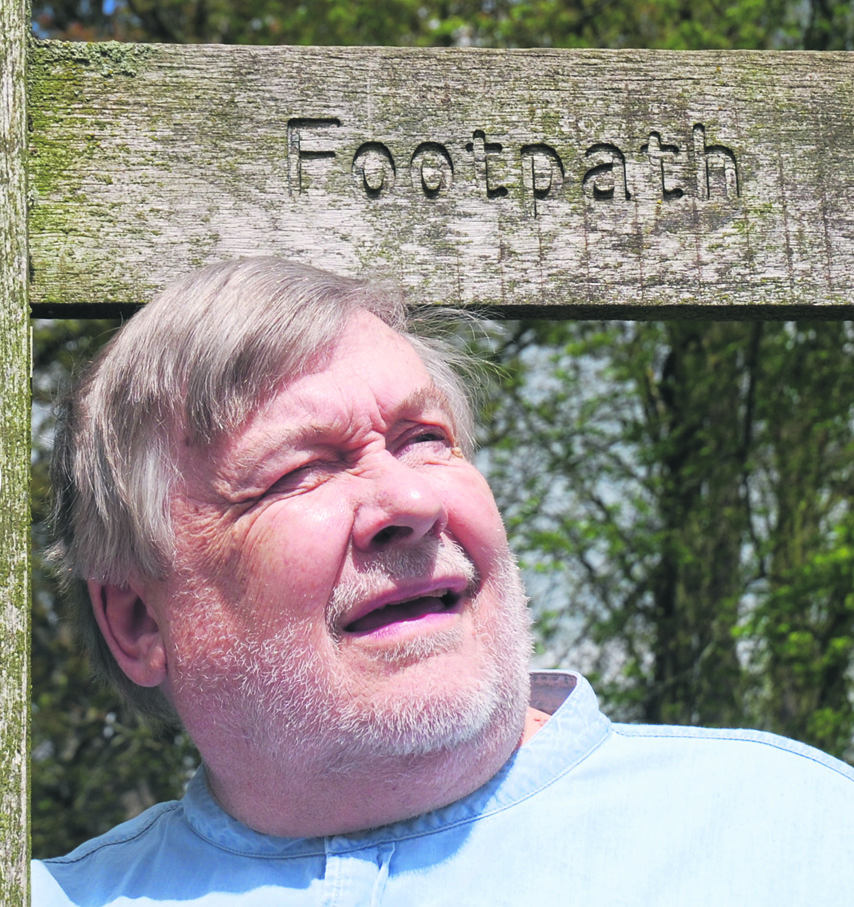The electorate see no evidence of the government’s promises of change, and the good jobs and decent pay that people are crying out for. Bold action is needed right now, warns SHARON GRAHAM

 A file photo of a brown bear
A file photo of a brown bear
LAST week I heard the appalling news that two brown bears (Ursus arctos) had been shot and killed after escaping their enclosure at Whipsnade Zoo, part of the Zoological Society of London.
The escape has been blamed on a storm battered tree which fell onto their enclosure fence and enabled them to scramble into a neighbouring wild boar enclosure.
This must be a deeply distressing time for those who cared for the bears, named Snow White and Sleeping Beauty.
The danger to the public was such that they could not use tranquilisers because of the time they take to put the bear to sleep — some 20 minutes. Instead, they shot the bears dead.
The brown bear has one of the largest brains of any living animal relative to their body size. They are intelligent and have been shown even to use stones as tools.
It is found across Europe, Asia and North America. In North America brown bears are called grizzly bears. [[{"fid":"31454","view_mode":"inlineleft","fields":{"format":"inlineleft","field_file_image_alt_text[und][0][value]":false},"type":"media","field_deltas":{"1":{"format":"inlineleft","field_file_image_alt_text[und][0][value]":false}},"link_text":null,"attributes":{"height":"435","width":"660","class":"media-element file-inlineleft","data-delta":"1"}}]]
It is one of the largest living bears, rivalled in size only by its closest relative, the polar bear, with which it occasionally interbreeds to produce what is called a prizzly.
Climate change is increasingly bringing the polar bear further south and into grizzly territory.
Brown bears once roamed free in Britain. Remains from the Pleistocene period are common in Britain and the last British brown bear died in the early medieval period, around 1,500 years ago.
Today there are approximately 200,000 brown bears left in the world. Some 14,000 of them in Spain and France.
The brown bear is the most variable in size of modern bears. Size depends upon which population it is from. Male brown bears average at least a third larger than females.
Individual bears also vary in size seasonally, weighing the least in spring due to lack of foraging during hibernation, and the most in late autumn.
Brown bears grow to a length of four foot seven inches to nine foot two inches (1.4 to 2.8m) although the Whipsnade bears were at the smaller end of the range.
Brown bears have very large and curved claws. They use these to climb trees when young but as they put on weight as adults they climb less and less.
Brown bears are the only living bears with a hump at the top of their shoulder, which is made entirely of muscle used in digging. They dig their dens and for roots, tubers and grubs underground.
This species lives from sea level to an elevation of 16,000 feet (5,000m). They prefer open country with some cover for rest during the day.
Depending on where they live they may be either nocturnal or active in daylight.
Like all bears, brown bears can stand on their hind legs and walk for a few steps in this position, usually motivated to do so by curiosity, hunger or alarm.
In summer and autumn, a brown bear can double its weight, gaining up to 400lb (180kg) of fat, on which it relies to make it through winter.
They become very lethargic in winter but do not usually fully hibernate.
Females mature sexually between the age of four and eight years of age, while males first mate about a year later on average, when they are large and strong enough to successfully compete with other males for mating rights. Both males and females mate with more than one other bear.
There have been rare cases of brown bears with as many as six cubs, although the average litter size is one to three. [[{"fid":"31455","view_mode":"inlinefull","fields":{"format":"inlinefull","field_file_image_alt_text[und][0][value]":false},"type":"media","field_deltas":{"1":{"format":"inlinefull","field_file_image_alt_text[und][0][value]":false}},"link_text":null,"attributes":{"height":"440","width":"660","class":"media-element file-inlinefull","data-delta":"1"}}]]
The cubs feed on their mother’s milk until spring or even early summer. Cubs remain with their mother for between two and three years.
The brown bear has an amazingly varied diet and has been recorded as consuming the greatest variety of foods of any bear. It is always curious and will try anything that looks like food.
Their diet is about 90 per cent vegetables, berries, roots etc, but they also hunt and eat small rodents and other animals. The fishing techniques of bears are well known. They often congregate around falls when the salmon are jumping. [[{"fid":"31456","view_mode":"inlineright","fields":{"format":"inlineright","field_file_image_alt_text[und][0][value]":"Pic: Brocken Inaglory / Creative Commons"},"type":"media","field_deltas":{"1":{"format":"inlineright","field_file_image_alt_text[und][0][value]":"Pic: Brocken Inaglory / Creative Commons"}},"link_text":null,"attributes":{"alt":"Pic: Brocken Inaglory / Creative Commons","height":"461","width":"660","class":"media-element file-inlineright","data-delta":"1"}}]]
The brown bear has a naturally long life. Wild females have been observed giving birth up to 28 years of age. The oldest wild brown bear on record was nearly 37. In captivity female can live up to 40 years, males 10 years longer.
The question we have to ask ourselves is what is the justification for keeping this, and many other wild beasts in captivity? The brown bear is currently classified as “of least concern” by the IUCN Red List of Threatened Species, so there is no good conservation reason as to why this species is locked up in captivity.
Zoos are supposed to be vigorously inspected. Whipsnade’s last inspection had the inspectors asking: “Are trees regularly inspected and appropriate remedial action taken?”
Whipsnade answered Yes. This must call into question the effectiveness of current licensing and inspection process of zoos all over the country.
Bears are popular with zoo visitors — all the more so if they produce cubs. Most popular of course is the polar bear (Ursus maritimus).
Producing a polar bear cub in captivity is as good as winning the lottery for any zoo.
Zoos always talk about keeping polar bears as conservation projects but as I have written in these columns many times before, not one single captive polar bear has ever been successfully returned to the snowy land of their birth. Not one, ever, anywhere. [[{"fid":"31457","view_mode":"inlinefull","fields":{"format":"inlinefull","field_file_image_alt_text[und][0][value]":false},"type":"media","field_deltas":{"1":{"format":"inlinefull","field_file_image_alt_text[und][0][value]":false}},"link_text":null,"attributes":{"height":"310","width":"660","class":"media-element file-inlinefull","data-delta":"1"}}]]
There are over 120 polar bears currently in captivity in Europe and over 300 captive polar bears in the world.
While there are considerable threats facing wild polar bear populations and their habitat, keeping and breeding more bears in zoos has no genuine role to play in bear conservation.
Like most captive-bred carnivores, captive-bred bears are generally incapable of surviving in the wild. Furthermore, captive breeding is not among the conservation actions recommended for these species.
Experience of bears in zoos the world over has shown us time and again that they simply do not fare well in captivity.
Although in recent years many zoos, like Whipsnade, have replaced iron bars and concrete enclosures with glass windows, electric fences and moats, the space for captive bears is tiny in comparison to their wild natural habitat.
A typical zoo polar bear enclosure is approximately one millionth of its minimum home range size in the wild.
Likewise, pools within enclosures can never provide captive bears with anything like a wild experience. The same comparisons can be made for other species of bear.
In the wild, brown bears also usually occupy vast home ranges. Males always cover more area than females each year.
In Romania a study found that the largest home range recorded for adult males was about 1,250 square miles.
No wonder the Whipsnade bears wanted to get out and wander. When that Bedfordshire tree blew down and offered a chance to roam the two brown bears headed for open space and freedom.
Little did they know that that perfectly natural action would lead to a premature death.
This tragic Bedfordshire killing should be a wake-up call requiring all zoos and other captive facilities to immediately review their enclosures and procedures to ensure that fences cannot be breached by a fallen tree or anything else.
Two beautiful wild animals have paid the price for we humans’ strange obsession with keeping wildlife in unnatural captivity simply for us to gaze at.



















